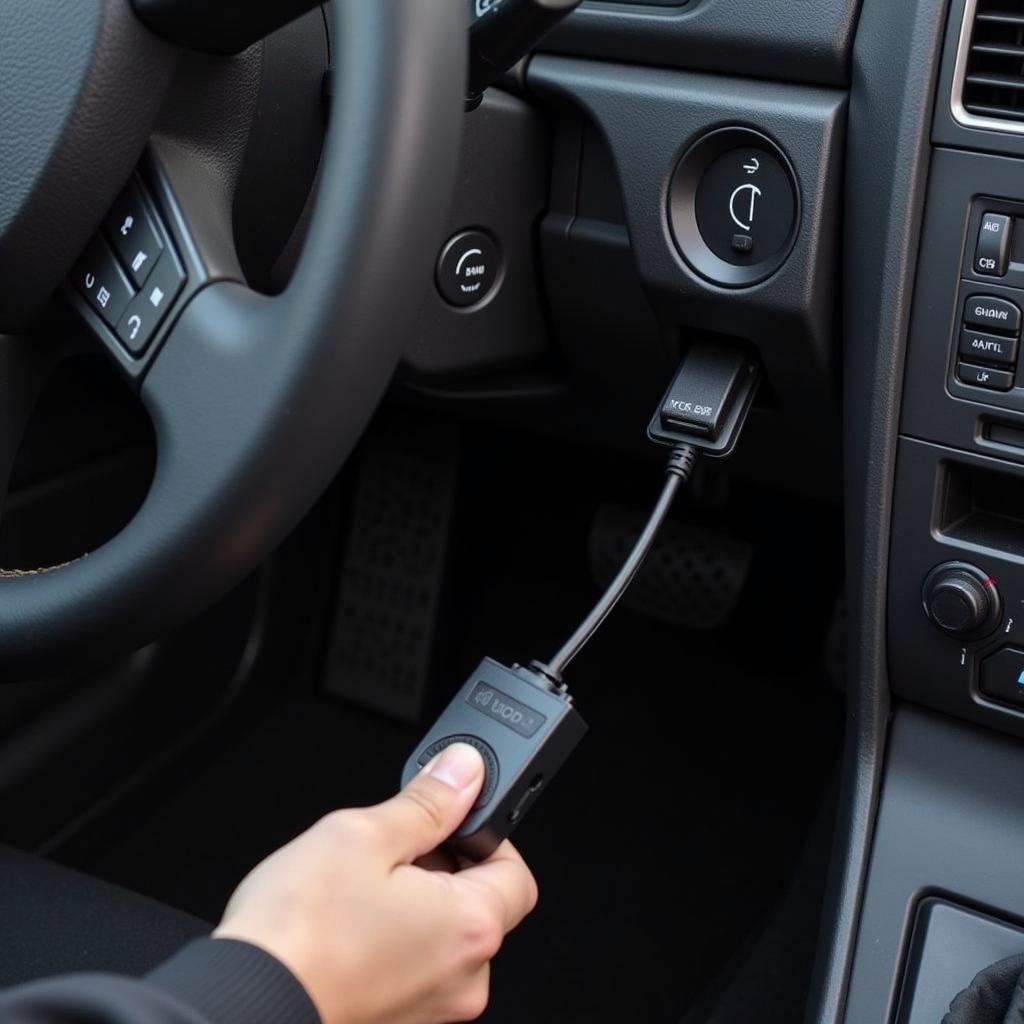Your cart is currently empty!

Reading Oil Pressure VCDS MK4: A Comprehensive Guide
Understanding your car’s oil pressure is crucial for maintaining engine health. If you’re a VW MK4 owner, especially if you’re using VCDS (Vag-Com Diagnostic System), reading oil pressure accurately is essential. This guide provides a comprehensive overview of reading oil pressure with VCDS on your MK4, covering everything from basic principles to troubleshooting common issues.
Why is Reading Oil Pressure with VCDS MK4 Important?
Low oil pressure can lead to catastrophic engine damage, while high oil pressure can indicate other problems. Regularly checking your oil pressure with VCDS allows you to catch potential issues early and prevent costly repairs. Using VCDS provides a more accurate reading than the standard dashboard gauge, giving you a clearer picture of your engine’s health. Are you ready to dive deeper?
How to Read Oil Pressure with VCDS MK4
Accessing oil pressure data on your MK4 using VCDS is straightforward. First, connect your VCDS cable to the OBD-II port and turn the ignition on. Select “Engine” from the main menu, then “Measuring Blocks – 08.” In the “Group” field, enter “115” for oil pressure and temperature. The displayed value will represent your current oil pressure in bar or psi, depending on your VCDS settings. It’s as simple as that!
 Connecting VCDS Cable to OBD-II Port
Connecting VCDS Cable to OBD-II Port
Understanding the Oil Pressure Readings on Your MK4
Typical oil pressure readings for a healthy MK4 engine at operating temperature will vary depending on RPM. At idle, you might see around 2 bar (approximately 29 psi). At higher RPMs, the pressure should increase proportionally, typically reaching 4-5 bar (58-73 psi). Anything significantly lower or higher than these values warrants further investigation. Don’t ignore unusual readings!
Troubleshooting Common Oil Pressure Problems with VCDS MK4
If your VCDS readings reveal abnormal oil pressure, don’t panic. Here are some common issues and how to address them:
-
Low Oil Pressure: This could indicate low oil levels, a faulty oil pump, or worn bearings. Check your oil level first. If it’s low, top it up. If the problem persists, further diagnostics with VCDS are needed to pinpoint the cause.
-
High Oil Pressure: While less common, high oil pressure can signal a blocked oil filter, a faulty pressure relief valve, or incorrect oil viscosity. Start by checking and replacing the oil filter. If the issue remains, consult a qualified technician for further diagnosis.
What if My Dashboard Gauge and VCDS Readings Differ?
The dashboard gauge is often less accurate than VCDS. If you see a significant discrepancy between the two, trust the VCDS reading. The dashboard gauge is more of an indicator, while VCDS provides precise data.
“Consistent monitoring with VCDS is the key to proactive engine maintenance,” says automotive expert, Dr. James Miller, PhD, Mechanical Engineering. “It empowers you to identify and address potential issues before they escalate into major problems.”
Reading Oil Pressure VCDS MK4: FAQs
- Why is VCDS more accurate than my dashboard gauge? VCDS directly accesses the engine control unit (ECU) for precise data, while the dashboard gauge relies on a less accurate mechanical sensor.
- What should I do if I see fluctuating oil pressure readings? Fluctuations can indicate a failing oil pump or other issues. Further diagnostics are essential.
- Can I damage my engine by reading oil pressure with VCDS? No, reading oil pressure with VCDS is a non-invasive procedure that won’t harm your engine.
“Using VCDS to monitor your MK4’s oil pressure is like having a direct line to your engine’s health,” adds Miller. “It’s a powerful tool for any enthusiast or professional.”
Conclusion
Reading oil pressure with VCDS on your MK4 is a simple yet powerful way to maintain your engine’s health and prevent costly repairs. By understanding how to interpret the readings and troubleshoot common problems, you can keep your MK4 running smoothly for years to come. Don’t hesitate to reach out for further assistance. You can contact us at +1 (641) 206-8880 and our email address: vcdstool@gmail.com or visit our office at 6719 W 70th Ave, Arvada, CO 80003, USA. Also, check out vcdstool for more information and resources.
by
Tags:
Leave a Reply